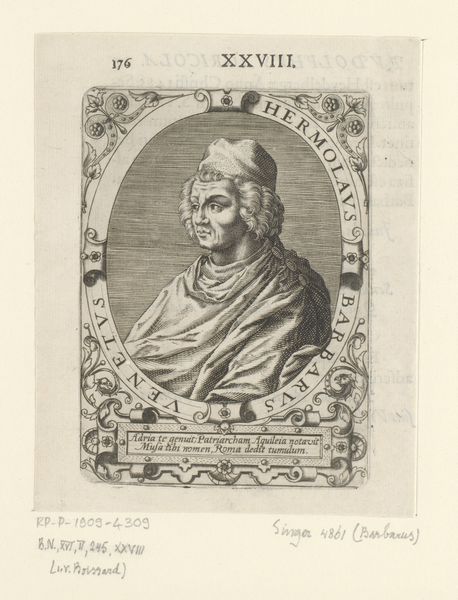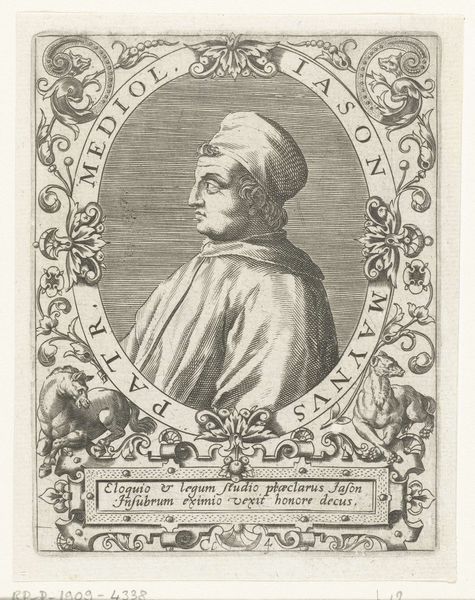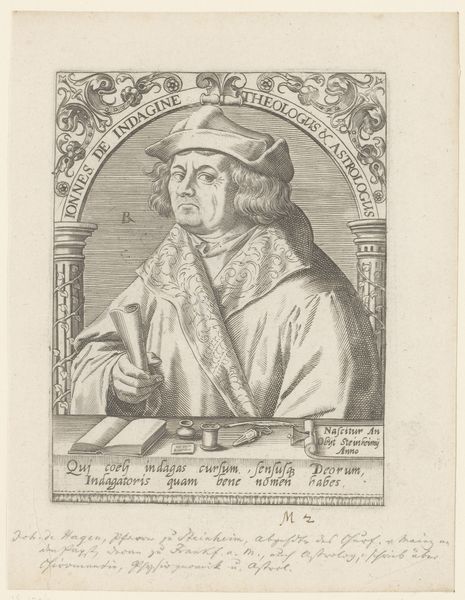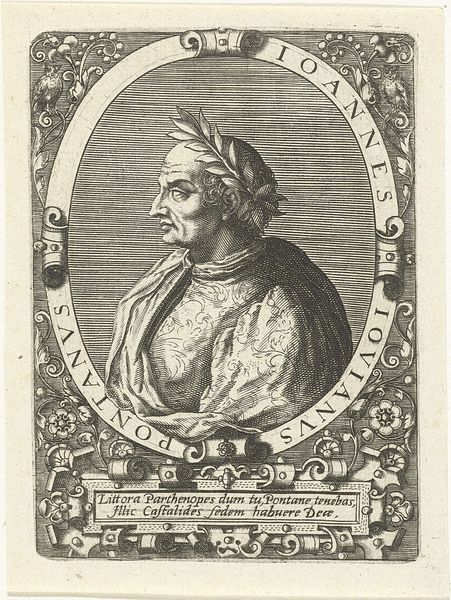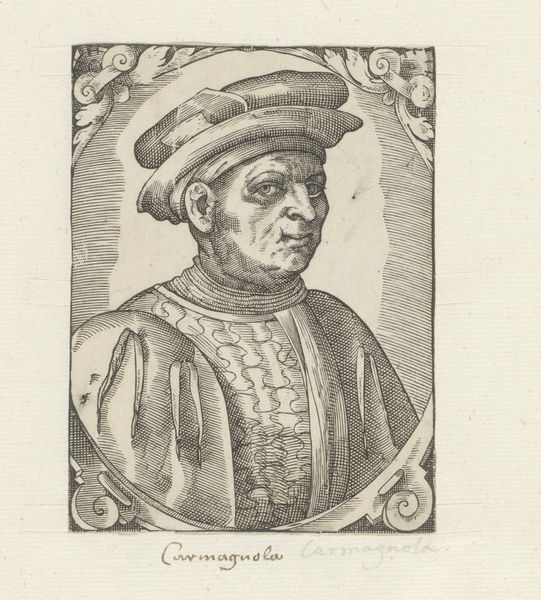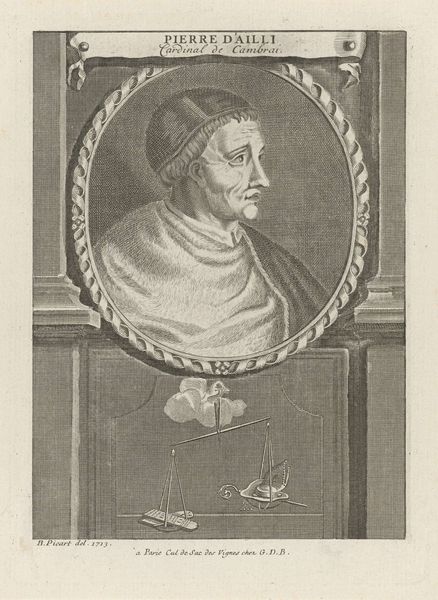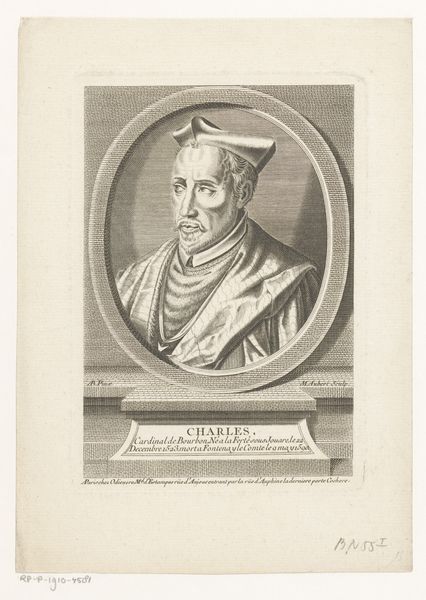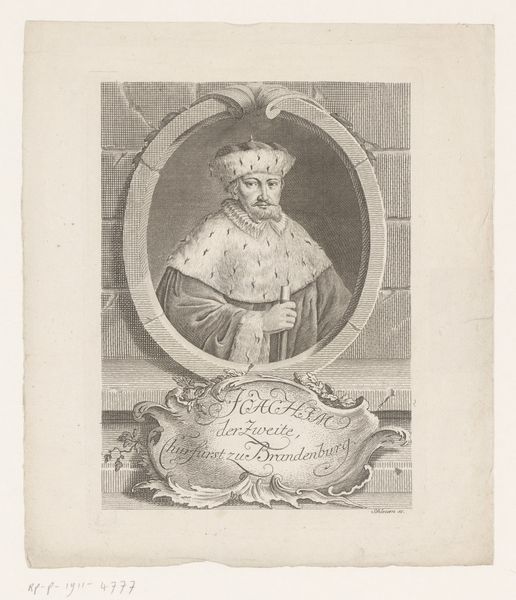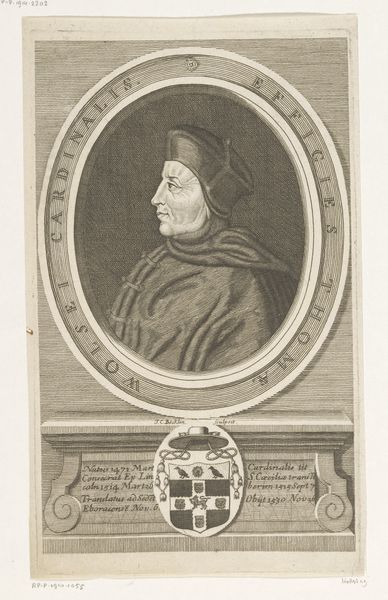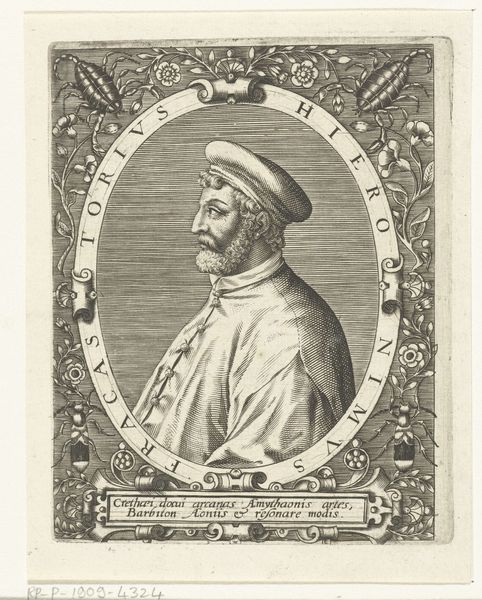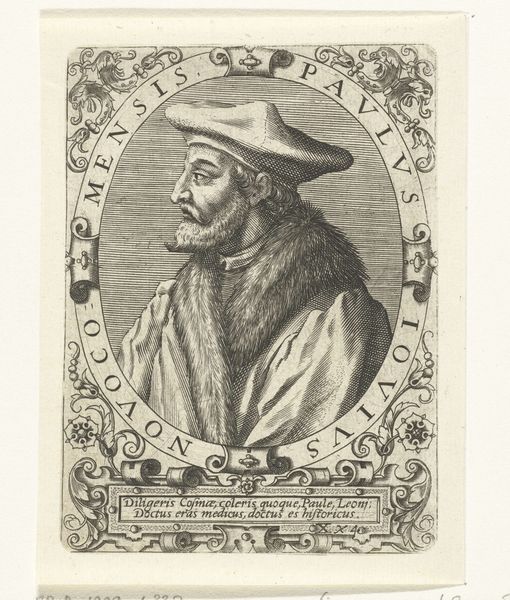
print, engraving
#
portrait
#
baroque
# print
#
old engraving style
#
woodcut effect
#
figuration
#
traditional style
#
line
#
engraving
Dimensions: height 144 mm, width 112 mm
Copyright: Rijks Museum: Open Domain
Curator: Here we have a print dating from 1597 to 1599, titled "Portret van Angelo Poliziano," attributed to Robert Boissard. The piece currently resides in the Rijksmuseum's collection. Editor: It’s remarkable how much life the engraver brings to the portrait through those delicate lines. The rendering is quite refined. What strikes me immediately is the very decorative and formal design, from the floral scrolls to the birds perched around the frame. Curator: The Baroque era was known for its use of symbols and the intent of provoking an emotional response. Look at the prominent circular frame adorned with fauna, evoking knowledge and wisdom. Poliziano was a humanist, after all, a scholar associated with rediscovering and preserving classical knowledge. This setting elevates him into an allegorical space where philosophy meets art. Editor: Observe the way light is being played within the engraved lines. See how light defines the soft textures of the robe, contrasted to his features. His thoughtful gaze directed to the left and his neutral affect exude composure and contemplation. Curator: That’s a fascinating observation when you remember Poliziano's intellectual impact in his time. Birds appear within the frame, but what species of birds? The bird species likely were included intentionally for their symbolic association with poetry and creativity in this presentation of a great scholar of language. Editor: I’m captivated by the precision with which Boissard used the engraving technique. How lines coalesce to create texture, depth, even emotions. He wasn't simply copying; he was truly translating the essence of Poliziano. Curator: This portrait serves as a window into the cultural and intellectual values placed on classical learning during that era. It’s an invitation to contemplate Poliziano’s role in transmitting those traditions to the Renaissance. Editor: A true formal mastery which brings a tangible sense of character.
Comments
No comments
Be the first to comment and join the conversation on the ultimate creative platform.

